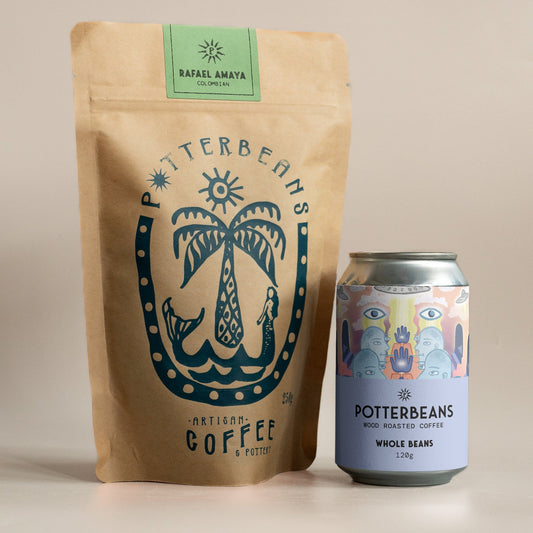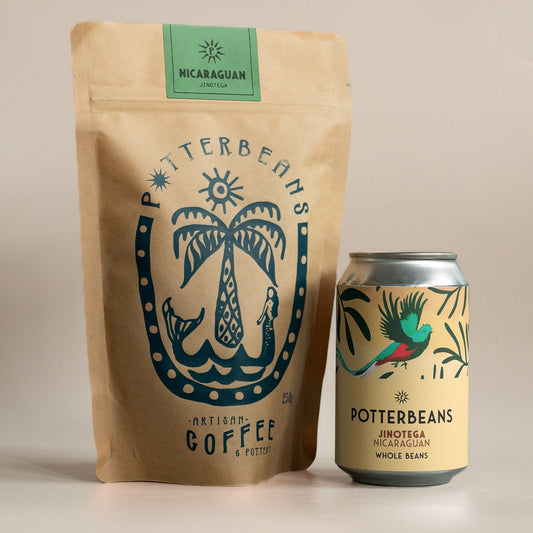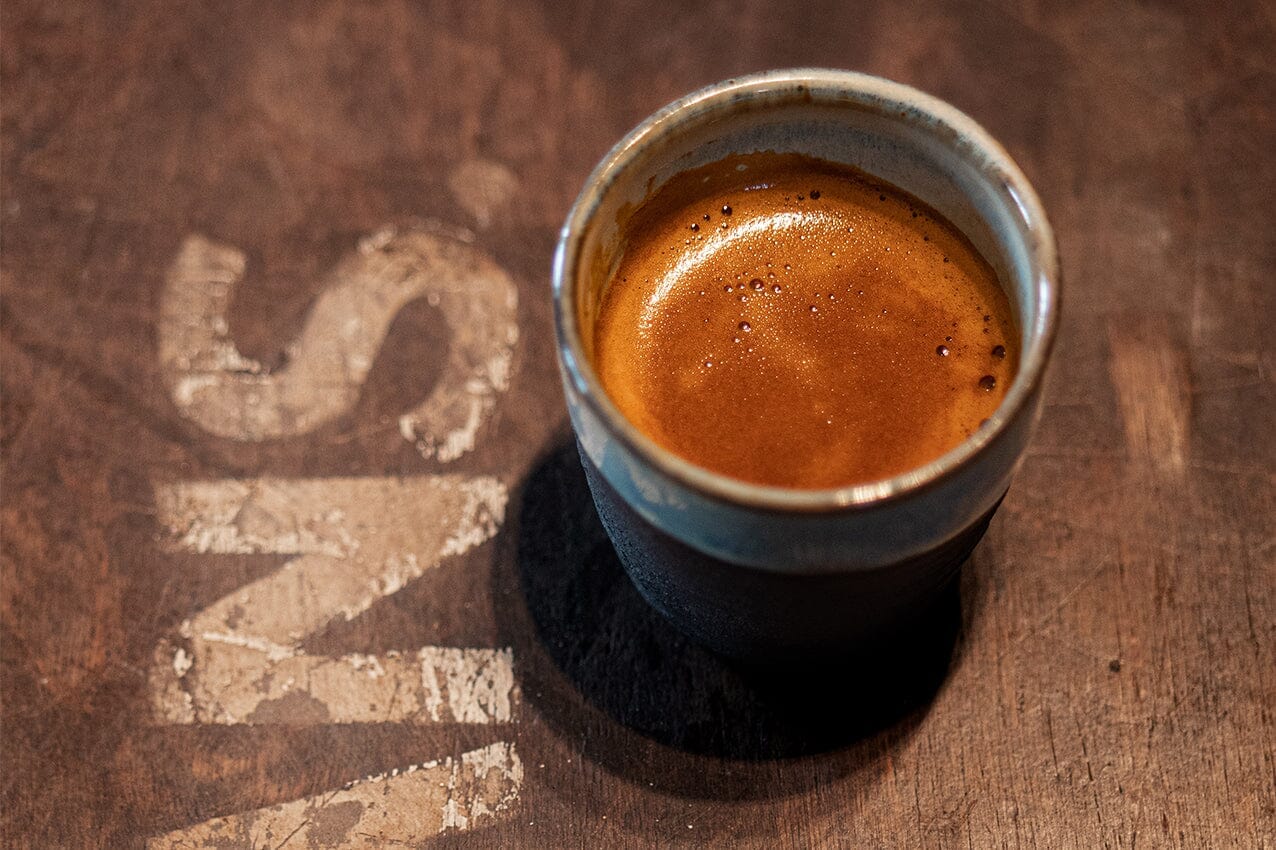-
India Ratnagiri Estate Cauvery Honey
Normaler Preis $7.07 USDNormaler PreisGrundpreis pro -
India Ratnagiri Estate Red Honey
Normaler Preis $7.07 USDNormaler PreisGrundpreis pro -
 Ausverkauft
AusverkauftRafael Amaya (Colombian)
Normaler Preis $10.08 USDNormaler PreisGrundpreis pro -
 Ausverkauft
AusverkauftNicaragua Jinotega region Honey process
Normaler Preis $7.07 USDNormaler PreisGrundpreis pro

PRODUCER SPOTLIGHT
Rafael Amaya
Typically, in Colombia coffee beans are fermented for around 14-16 hours. Rafael began by fermenting them for around 40 hours, a significant increase and shift in the process. This set him on a path of experimentation that would see him produce incredibly unique and complex cups.
Honey Processed Coffees
The honey process, also known as the pulped natural process, is a method of processing coffee cherries where the outer skin is removed, but some or all of the mucilage (the sticky, sugary layer beneath the skin) is left on the beans during drying. This process is popular in countries with limited water resources, such as Costa Rica. Here’s how it works:
1. Harvesting: Ripe coffee cherries are hand-picked.
2. Depulping: The outer skin of the cherries is mechanically removed, leaving the mucilage intact.
3. Drying: The beans, with mucilage still attached, are spread out on drying beds or patios. They are regularly turned to ensure even drying. The mucilage gives the beans a sticky appearance, hence the name "honey process".
4. Drying Duration: The drying process can take several weeks. The amount of mucilage left on the beans and the drying conditions influence the final flavour profile.
5. Hulling: Once the beans reach the desired moisture content, they are hulled to remove any remaining parchment layer.
The honey process can be further categorized based on the amount of mucilage left on the beans:
- White Honey: Minimal mucilage is left on the beans.
- Yellow Honey: A moderate amount of mucilage is left on the beans.
- Red Honey: A significant amount of mucilage is left on the beans, requiring longer drying times.
- Black Honey: The most mucilage is left on the beans, resulting in the longest drying times and the most complex flavours.
Red Honey Process Coffee
The red honey process is a specific type of honey process where a large portion of the mucilage is left on the coffee beans during drying. This method emphasizes the development of rich, complex flavors, often with pronounced sweetness and fruity notes. Here’s a detailed look at the red honey process:
1. Harvesting: Only the ripest cherries are selected, ensuring the highest quality.
2. Depulping: The cherries are depulped, but a substantial amount of the mucilage is retained on the beans.
3. Drying: The beans with their mucilage are laid out on raised beds or patios to dry. They are carefully monitored and turned regularly to prevent fermentation and ensure uniform drying. The beans typically take on a reddish hue due to the significant amount of mucilage, hence the term "red honey".
4. Drying Duration: Drying in the red honey process can take several weeks, as the thicker layer of mucilage slows the drying time. This slower drying process allows for deeper flavor development.
5. Hulling: After reaching the optimal moisture content, the beans are hulled to remove the parchment layer, preparing them for roasting.
The red honey process tends to produce coffee with a well-balanced acidity, a syrupy body, and complex flavors, often with notes of red fruit, caramel, and honey. It requires meticulous attention to detail during drying to avoid over-fermentation and ensure the highest quality cup.
Anaerobic Process Coffee
The anaerobic process is a unique method of fermenting coffee cherries in an oxygen-free environment, which significantly influences the flavour profile of the beans. This innovative technique has gained popularity among specialty coffee producers for its ability to create distinct and vibrant flavors. Here's a detailed look at the anaerobic process:
1. Harvesting: Only the ripest coffee cherries are hand-picked to ensure the highest quality.
2. Sealing: The cherries are placed in airtight fermentation tanks, creating an anaerobic (oxygen-free) environment.
3. Fermentation: The lack of oxygen initiates a different type of fermentation compared to traditional methods. This process is closely monitored and can last from several hours to a few days, depending on the desired flavor profile.
4. Depulping (if necessary): After fermentation, the cherries may be depulped to remove the outer skin, though some variations of the process involve fermenting the whole cherries.
5. Drying: The beans, now free from the pulp or with the mucilage still attached, are spread out on drying beds or patios. They are regularly turned to ensure even drying.
6. Drying Duration: The drying process can take from several days to a few weeks, depending on the environmental conditions and the specific goals of the producer.
7. Hulling: Once the beans reach the desired moisture content, they are hulled to remove any remaining parchment layer.
Flavor Profile and Characteristics
The anaerobic process tends to produce coffee with a distinctive and often intense flavor profile. This can include:
- Enhanced Acidity: Bright and lively acidity is a common characteristic.
- Complex Flavours: The process often brings out unique and complex flavors, including tropical fruits, floral notes, and spiciness.
- Full Body: The coffee typically has a fuller, more rounded body.
Benefits of the Anaerobic Process
1. Flavour Innovation: Allows for the creation of unique and experimental flavour profiles that stand out in the specialty coffee market.
2. Consistency: The controlled environment can lead to more consistent results compared to traditional fermentation methods.
3. Sustainability: The process can be more environmentally friendly, as it often requires less water than traditional wet processing methods.
Challenges of the Anaerobic Process
1. Complexity: Requires precise control and monitoring, making it more labour-intensive.
2. Risk: The process can easily go wrong, leading to undesirable flavours if not carefully managed.
3. Cost: The need for specialized equipment and careful oversight can increase production costs.
The anaerobic process is a fascinating and cutting-edge method in the coffee industry, producing some of the most intriguing and flavorful coffees available today. It requires a high level of expertise and careful management but offers the potential for exceptional and distinctive coffee experiences.
More coffees
-

Single Origin Coffee Beans
Single origin coffee beans, wood roasted in Cornwall UK. Central American, and...
-

Speciality Coffee beans
Speciality arabica coffees from around the world. 80+ scoring coffees wood roasted...
-

Coffee Blends
Coffee blends are good as a regular go to coffee, changing a little with...








